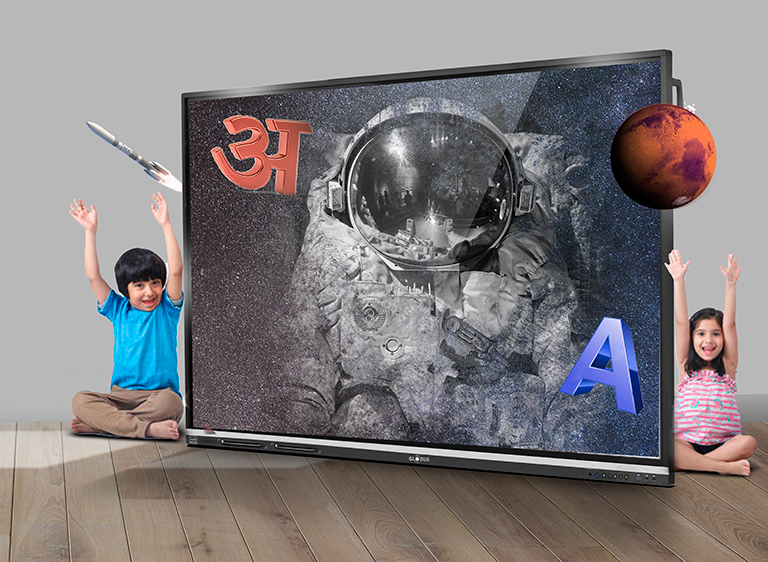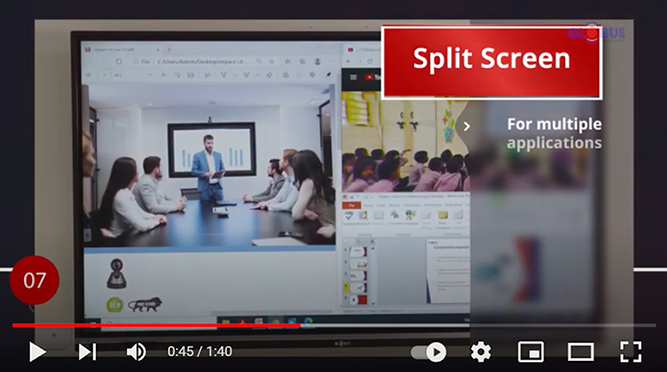During these uncertain times, we certainly know that education has changed forever. Though, educational institutes have gradually resumed their physical academic activities, it is hard to say that it can go back to normal completely like the pre-pandemic days.
With Covid-19 here to stay with us for long, we must reconsider the situation and come with new solutions to retain the quality of education while safeguarding learners’ well-being. Some institutions are trying to return to classrooms the same way they did before the pandemic while others aspire to make the best of online learning. However, the solution lies just in the middle.

There would be three scenarios that could prevail in the coming education scenario: Classroom Learning, Blended Learning, and Online Learning. In all the three situations, Globus Interactive Display can increase the effectiveness of learning in more than one way.
How Globus Interactive Display Can Help in Post Pandemic Education
In all these scenarios, Globus Interactive Display can help achieve academic goals of learners and educators. Here’s how.
1. Classroom Learning
An Interactive Display can help maintain social distancing among students by improving visual impact and engagement. It will also boost interactivity despite secure distance between learners. Also, owing to its pre-loaded learning resources, teachers can reduce circulation of papers and textbook while conducting the instructional practices. These notes can be broadcasted on students’ tablets or can be shared with them in PDF format to reduce contact between them.
2. Blended Learning
In Blended Learning, students can avail benefits of both self-paced learning as well Instructor-Led Training to achieve their academic goals. It involves physical presence of few students in a classroom to disseminate learning material while another group receives knowledge online. To make the sessions more engaging and impact, Interactive Displays can be deployed. It will elevate the learning experience for those present in classrooms and can simultaneously engage students who are learning remotely.
Also, learning resources from Interactive Display can be shared easily with students’ devices wirelessly via email or wireless content sharing. This way, a greater number of students can attain education while having lesser number of students physically present in a classroom.
3. Online Learning
Many institutions are continuing the online learning trend even as many schools and colleges are planning to open. In order to make online learning sessions engaging and effective, Interactive Displays can be deployed at teacher’s end. It can be used to conduct Live Classes where students and teachers can interact face-to-face via video conferencing. A video conferencing camera can also be installed to capture teacher interacting with students during the lesson to significantly increase student engagement.
Also, Interactive Displays in online learning can be a great way to make remote education more streamlined and organized. With the help of Virtual Classroom and Learning Management Systems, all the learning resources, progress reports, attendance, schedules, etc. can be unified in a single platform. It reduces the tedious manual work for teachers, so that they can focus on what matters more; students’ learning outcomes.
Conclusion:
It is hard to tell yet what near future might bring for the education ecosystem in India. However, it is certain that Digital Learning is more needed to match strides with the technological leap. At Globus Infocom, we develop and innovate learning solutions that help education institutions walk shoulder to shoulder with the technological advancement in society. So far we have transformed more than 30,000 schools and colleges and further we are determined to completely digitize education in India.


1 Item(s)
annu yadav
1 Item(s)